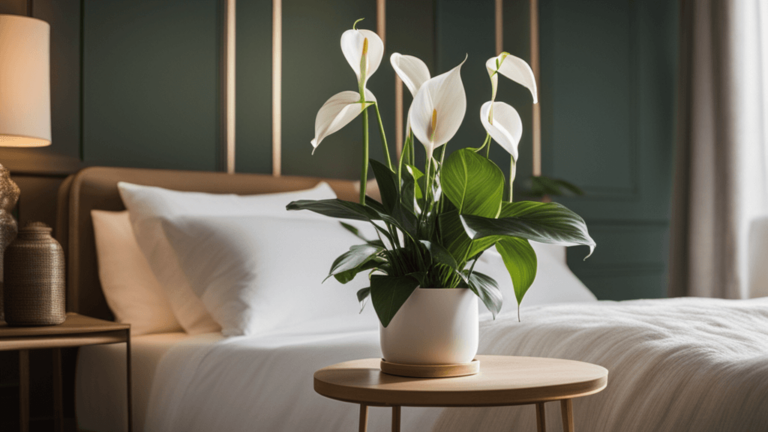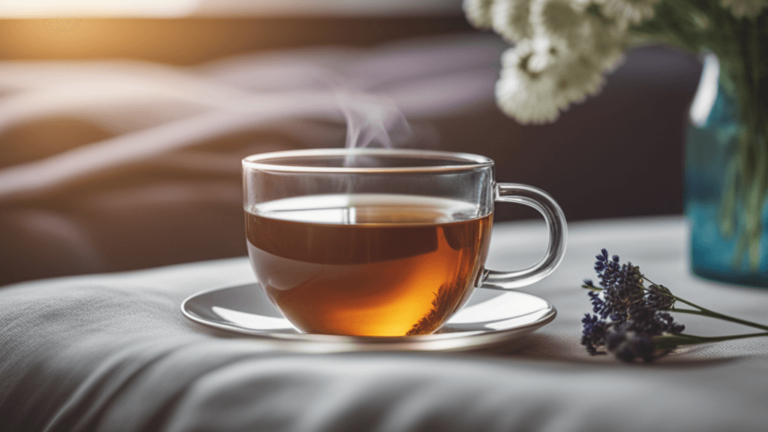How to Sleep Better for Thanksgiving Festivities: Your Ultimate Guide [2025]
Autumn represents a time of harvest, reflection, and grateful gathering. As nature displays its most vibrant colors before settling into rest, we too can embrace this season of abundance to improve our sleep quality. Thanksgiving, with its themes of gratitude and togetherness, offers the perfect opportunity to create peaceful rituals that promote restoration. If you’re navigating family gatherings and maintaining your sleep schedule amid festive chaos, this guide shows you how to sleep better for Thanksgiving by addressing the unique sleep challenges of the holiday season. From combating holiday insomnia and sleep anxiety to optimizing your sleep environment and practicing stress management, discover how to achieve quality sleep throughout the season.
With soothing music, warming scents, nourishing harvest foods, and mindful gratitude practices, we’ll explore strategies that promote relaxation and support your circadian rhythm.

Creating Your Sleepy Autumn Soundtrack
Home, Connection, Belonging, and Gratitude
Music can be a powerful ally in promoting better sleep quality. As part of a comprehensive bedtime routine, autumn-themed songs offer an especially comforting touch as the seasons change, helping to regulate your circadian rhythm and ease holiday stress. Research shows that adults who spend 45 minutes listening to relaxing music before bed not only fall asleep faster but also enjoy longer, better-quality rest. Integrating soothing music into your nighttime routine encourages the body and mind to slow down, fostering a sense of security and tranquility essential for restorative sleep.
To help you embrace the spirit of Thanksgiving, this curated list of ten soft autumn-inspired songs highlights uplifting messages of connection and gratitude alongside a calming musical ambiance. Selected to support relaxation, each song’s gentle tempo (ranging from 60-80 beats per minute, matching a resting heart rate), minimal percussion, and soothing, repetitive melodies quiet mental activity and promote emotional comfort. Creating a playlist with these and similar calming tunes can become a simple yet transformative ritual for unwinding and preparing for a restful night’s sleep.
Thanksgiving Sleep Playlist
“O Siem” by Susan Aglukark
- Tempo: 77 BPM
- Characteristics: A heartfelt song blending folk and Inuit influences, it conveys unity and inclusiveness. Aglukark’s gentle delivery creates a calming sense of connection and peace.
“Beauty of the Earth” by Eclipse 6
- Tempo: 65 BPM
- Characteristics: A cappella harmonies evoke a sense of reverence for nature. The layered voices rise and fall in tranquil patterns, creating a serene atmosphere that brings listeners into stillness.
“93 Million Miles” by Jason Mraz
- Tempo: 70 BPM
- Characteristics: A reassuring acoustic ballad that highlights themes of home and belonging. Mraz’s warm vocals and repetitive guitar rhythm provide grounding comfort for winding down.
“Hands” by Jewel
- Tempo: 64 BPM
- Characteristics: A reflective, prayer-like song centered on kindness and resilience. Jewel’s tender vocal style and minimalist folk instrumentation encourage reflection and emotional release.
“Place In This World” by KING & COUNTRY, Michael W. Smith
- Tempo: 77 BPM
- Characteristics: An uplifting contemporary ballad with hopeful lyrics about seeking purpose. The gentle piano and heartfelt voices blend to create a soundscape for moments of quiet searching.
“Carolina in My Mind” by James Taylor
- Tempo: 76 BPM
- Characteristics: A classic soft folk ballad that evokes nostalgia and longing for home. Taylor’s mellow vocals and delicate guitar picking bring ease, making it ideal for relaxation before sleep.
“Take Back Home Girl” by Chris Lane, Tori Kelly
- Tempo: 80 BPM
- Characteristics: A country-pop duet with sweet harmonies centered on themes of intimacy and acceptance. The soft, flowing rhythm and alternating vocals create balance and comfort.
“Autumn Leaves” by Eva Cassidy
- Tempo: 73 BPM
- Characteristics: Cassidy’s emotional depth transforms this standard into a tender reflection on change and loss. Her voice floats over minimal accompaniment, fostering a meditative calm.
“Lean on Me” by Bill Withers
- Tempo: 75 BPM
- Characteristics: A timeless song about friendship and support, delivered with soulful simplicity. Withers’ warm baritone and steady, repetitive piano chords bring a sense of grounded peace.
“There You’ll Be” by Faith Hill
- Tempo: 65 BPM
- Characteristics: A sentimental ballad about enduring love and remembrance. Hill’s soaring yet soft delivery, paired with steady pacing, provides both comfort and emotional release.
Save this playlist
Sleep tip: Start playing your sleep playlist about 45 minutes before bedtime, keep the volume low, and use speakers rather than headphones for maximum comfort.
Cozy Harvest Haven: An Optimal Sleep Environment
Designing a Thanksgiving Bedroom Sanctuary

Harvest-inspired decor fills the bedroom with comforting warmth and gentle coziness through its rich earthy tones and layered textures, transforming your space into a true sleep sanctuary. A rustic wooden bed frame in deep walnut or warm oak, paired with plush flannel or knitted throws in rich copper, terracotta, and muted gold, serves as a captivating centerpiece that calls to mind the comforting embrace of harvest gatherings and the unhurried pace of autumn days. Consider adding classic plaid bedding or throw pillows in warm autumn hues, the timeless pattern brings a sense of cozy familiarity and visual comfort.
This intimate connection to nature’s seasonal rhythms encourages profound relaxation and deep, restorative sleep, crafting a snug, cocoon-like refuge perfect for unwinding as chilly evenings approach. A serene haven for embracing gratitude and peaceful reflection helps reduce sleep anxiety during the busy Thanksgiving season by supporting both your circadian rhythm and emotional wellbeing. Creating an optimal sleep environment is fundamental to sleep hygiene and quality rest.
Lighting for Better Sleep Quality
Bringing in autumnal lighting elements such as bronze table lamps with softly glowing amber bulbs, lantern-style wall sconces, and candles infused with scents like cedarwood and pumpkin spice adds layers of warm, soothing illumination that calms both mind and spirit. These pieces often showcase golden, copper, and rustic finishes, radiating a gentle glow reminiscent of early dusk or candlelight harvest celebrations. The diffused light streaming through textured lampshades or the steady flicker of pillar candles deepens the room’s ambiance, echoing autumn’s restorative embrace and creating an inviting atmosphere for both restful evenings and radiant mornings.
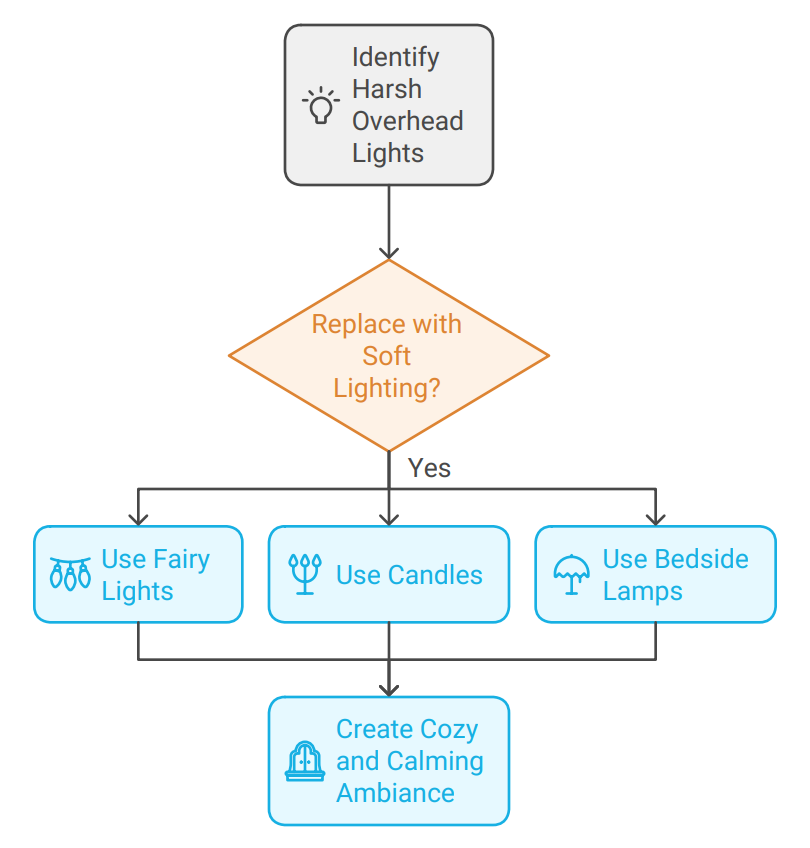
Seasonal Touches and Textures
The charm of harvest decor lies in its ability to evoke a seasonal sense of comfort through thoughtful, evocative details, such as a bundle of dried wheat or eucalyptus artfully arranged on an antique wooden tray, a woven basket brimming with velvet pumpkins and cozy throws, or plaid curtains caressing the gentle fall breeze. These details invite a gentle warmth that modern styles rarely achieve. The organic feel of wool, velvet, and weathered wood forms an autumnal tapestry, reflecting the simple abundance of harvest time and nurturing a smooth transition into Thanksgiving reflection and restorative sleep.
Autumn Plants and Thankful Decorations for Better Sleep
Create a warm and comforting sanctuary this Thanksgiving season by incorporating sleep-promoting natural elements into your bedroom. These carefully selected plants and decorative touches not only enhance your sleep environment with seasonal beauty but also contribute to better air quality and emotional wellbeing, key factors in achieving restorative sleep during the busy holiday season.
Kalanchoe: Autumn’s Blooming Bright Spot
Kalanchoe is a perfect low-maintenance succulent plant to brighten your Thanksgiving bedroom decor with vibrant clusters of flowers in warm autumn shades of red, orange, yellow, and white. These blooms complement fall palettes beautifully, creating visual warmth that supports a calming sleep environment. Beyond its ornamental appeal, Kalanchoe has notable anti-inflammatory and antioxidant properties, supported by scientific studies identifying bioactive compounds like flavonoids that contribute to health benefits such as wound healing and immune support. This makes Kalanchoe both a lively and beneficial addition to your cozy autumn decor.
Croton: The Living Leaf Canvas
Croton plants dazzle with their stunning foliage in rich fall colors of fiery red, golden yellow, warm orange, and deep green, perfectly capturing the palette of autumn leaves and Thanksgiving warmth. Varieties like the popular Petra display bold variegated patterns that bring vibrant life and texture indoors to elevate your sleep sanctuary. Crotons thrive in bright light, which intensifies their brilliant hues, making them ideal for adding a striking seasonal accent to your bedroom decor. Beyond aesthetics, Crotons also help improve indoor air quality by filtering toxins, creating a healthier environment that supports well-being during the cozy, reflective Thanksgiving season.
Thankful Jar: A Heartfelt Thanksgiving Tradition

The Thankful Jar is a simple, meaningful way to celebrate gratitude during Thanksgiving. Take a clear glass jar and decorate it with rustic twine, burlap, or autumn-themed ribbon. Place it in a visible spot with slips of paper and a pen nearby. Each day, write down moments, people, or things you’re grateful for and drop them into the jar. Over time, the jar fills with uplifting notes that you can read on Thanksgiving or whenever you want a peaceful reminder of gratitude. This cozy tradition adds warmth and reflection to your seasonal decor while serving as a powerful tool for managing sleep anxiety and reducing holiday stress.
Sleep tip: Keep your Thankful Jar on your nightstand and make it part of your evening wind-down ritual. Writing gratitude notes before bed can improve sleep quality by focusing on appreciation.
Thanksgiving Scents: Essential Oils for Cozy Comfort
As autumn leaves fall and the air turns crisp, our senses awaken to the rich, warm aromas that embody the spirit of Thanksgiving. This season calls for fragrances that envelop our homes with comfort, gratitude, and a sense of peaceful togetherness. Essential oils inspired by the harvest and cozy gatherings help you sleep better for Thanksgiving by creating an inviting atmosphere where memories are made and relaxation flourishes, while also supporting your body’s natural transition into restful sleep.
When diffused in living spaces or crafted into room sprays, these autumnal scents evoke the warmth of crackling fires, the spice of seasonal treats, and the grounding calm of nature’s turning cycle. These therapeutic aromas work wonderfully to soothe busy minds and reduce sleep disruption after lively family dinners, or to enhance moments of quiet reflection during the season of gratitude. Let these natural aromas infuse your home with a heartfelt embrace, turning every breath into a celebration of fall’s cozy magic while promoting the deep, restorative sleep you need during this festive season.
Essential Oils for Autumn Calm
Discover these warm, earthy, and spicy aromas to bring a sense of calm, grounding, and festive spirit to your autumn spaces while supporting your circadian rhythm and sleep hygiene.
Cedarwood

Cedarwood essential oil offers a warm, woody, and deeply grounding base note that conjures the essence of lush autumn forests. Its subtly balsamic undertones provide a stabilizing effect in blends, wrapping any space in a comforting, secure feeling that is perfect for restful evenings and cozy seasonal gatherings. Beyond its delightful scent, cedarwood promotes relaxation and quality sleep by helping to ease mental fatigue and reduce stress, making it ideal to encourage a peaceful night’s rest after busy holiday celebrations. Its calming properties help regulate breathing and heart rate, supporting your body’s natural sleep-wake cycle.
Patchouli
With its rich, earthy, and musky scent, patchouli serves as a powerful grounding oil that resonates with the contemplative energy of the autumn season. It delivers depth and warmth to blends, subtly balancing sweeter or brighter notes when used sparingly. More than a fragrance, patchouli helps promote emotional calm and balance during times of change, supporting mindfulness and tranquility that combat sleep anxiety. Its persistent aroma helps extend the longevity of blends, making it a valued base note. Patchouli’s sedative properties make it particularly effective for reducing stress and promoting restorative sleep during the emotionally charged holiday season.
Vetiver
Vetiver essential oil offers deep, smoky, and tranquil notes that act as an anchoring base in complex blends. Its calming properties aid in releasing tension and fostering mindfulness, grounding the heart and mind amid autumn’s reflective energy. Vetiver provides emotional stability and helps soothe anxieties, making it an excellent choice for use during quiet autumn evenings or after festive holiday gatherings. This oil’s robust earthy scent embodies the introspective spirit of the season while supporting sleep hygiene by quieting racing thoughts and promoting the deep relaxation necessary for quality sleep.
Nutmeg
Nutmeg essential oil features a warm, sweet, and spicy middle note that brings not only aromatic warmth but also a hint of festive spice reminiscent of holiday baking. Its comforting scent beautifully complements woody and earthy oils, creating a cozy, inviting ambiance that evokes memories of freshly baked pies and family gatherings. Nutmeg contributes both richness and brightness to blends and is cherished for its ability to soothe nerves and uplift mood, perfect for Thanksgiving and autumn celebrations.
Ginger
Ginger essential oil offers a bright, zesty, and warming aroma that acts as a dynamic top to middle note in blends. Its invigorating spiciness awakens the senses while adding a comforting warmth that perfectly suits the celebratory and nurturing spirit of the harvest season. Ginger’s uplifting scent encourages energy and positivity, balancing the deeper earthy notes in a blend and evoking the warmth of hearty autumn meals and festive gatherings. It’s ability to ease tension helps in achieving uninterrupted, restorative sleep.
Sleep tip: Start diffusing essential oils about 30 minutes before bedtime to create a relaxing sleep environment and signal to your body that it’s time to wind down.
Custom Scents: Homemade Room Sprays for Better Sleep

As autumn settles in, the air fills with rich, warming scents that evoke comfort, gratitude, and connection to the season’s natural rhythms. Why not bring these autumn-inspired aromas into your home with handcrafted room sprays that support healthy sleep hygiene? Creating your own seasonal fragrances is not only a cozy way to relax, but also allows you to blend custom scents that spark warmth, invite cherished memories, and promote restorative sleep. These personalized aromatic creations transform any space into a welcoming autumn retreat, perfect for celebrating Thanksgiving’s heartfelt moments while supporting your natural sleep-wake cycle.
- In a glass measuring cup, combine the essential oils.
- Add the witch hazel and mix well.
- Pour the mixture into a glass spray bottle.
- Add the distilled water and shake thoroughly to combine.
Cedarwood and Patchouli: Warm Earthy Comfort
- 20 drops Cedarwood oil
- 15 drops Patchouli oil
- 1 cup distilled water
- 2 tablespoons witch hazel
Vetiver and Nutmeg: Spicy Grounding Calm
- 15 drops Vetiver oil
- 15 drops Nutmeg oil
- 1 cup distilled water
- 2 tablespoons witch hazel
Ginger and Cedarwood: Soothing Warmth
- 15 drops Ginger oil
- 20 drops Cedarwood oil
- 1 cup distilled water
- 2 tablespoons witch hazel
Adjust the number of drops to your preference, but keep the total around 15-20 drops per cup of water for a balanced fragrance.
- Cedarwood oil provides a warm, woody, and grounding base note with subtle balsamic undertones. It stabilizes blends and rounds out sweeter or brighter oils with its comforting aroma.
- Patchouli oil is a strong, earthy, and musky base note that can dominate blends if overused. It adds richness and depth but is best used sparingly to avoid overpowering lighter scents.
- Vetiver oil acts as a deep, smoky, and calming base note. It anchors blends with its grounding and balancing qualities, harmonizing well with both woody and spicy oils.
- Nutmeg oil contributes a warm, sweet, and spicy middle note. It blends well with earthy and woody oils but can be strong, so moderate use is ideal for balanced warmth.
- Ginger oil offers a bright, spicy top to middle note with invigorating warmth. It evaporates relatively quickly, so often slightly higher amounts are used to maintain presence in blends.
- Witch hazel can assist in creating a more stable mixture by helping the essential oils disperse evenly throughout the water, and may help protect against environmental stressors.
Also consider scents from other themes like Christmas holiday essential oils, Valentine’s Day essential oils, and Easter holiday essential oils.
Mix your autumn blend in a spray bottle, give it a good shake, and lightly mist your pillows and bedding before bedtime. Cozy warmth and seasonal serenity await, enveloping you in the comforting scents of fall as you drift into restful sleep.
Harvest Comfort: 5 Vegetables for a Restful Night’s Sleep
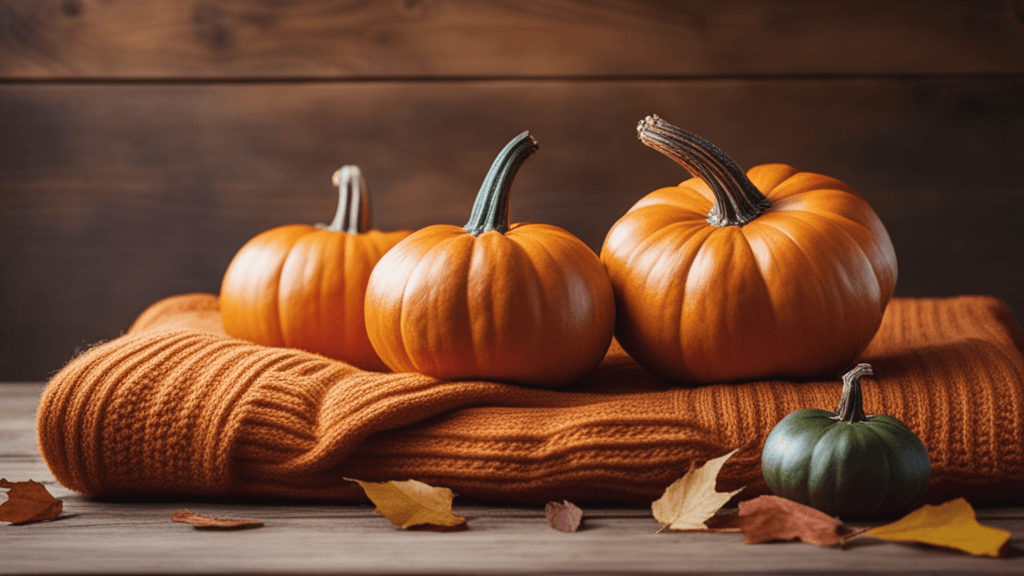
As Thanksgiving approaches, many people think of roast turkey, crunchy nuts, tangy cranberries, sweet apples, and classic carrots filling the holiday table. But alongside these favorites, there’s a bounty of autumn harvest vegetables deeply woven into Thanksgiving tradition, each bringing hearty flavor and unique wellness benefits. Let’s take a closer look at five comforting harvest vegetables that don’t just satisfy the appetite, but can also help promote a more restful night’s sleep. From sweet potato casserole to roasted Brussels sprouts, discover the sleep-supporting side of the season’s most beloved veggies, delicious choices ready to light up your plate and your dreams.
Pumpkin
Pumpkin and its seeds are a nutritional powerhouse for sleep. The vibrant orange flesh is rich in beta-carotene (which converts to vitamin A), potassium, and fiber, all aiding digestion and reducing inflammation to promote restful nights. Pumpkin seeds, meanwhile, are among the best plant-based sources of tryptophan, an amino acid critical for producing serotonin and melatonin, hormones that regulate regulate sleep-wake cycles and support your circadian rhythm. They also provide magnesium and zinc, which further support relaxation and healthy sleep cycles. Including pumpkin flesh and its seeds in your diet can help calm the nervous system and encourage deeper, higher quality sleep.
Sweet Potato
Sweet potatoes are loaded with complex carbohydrates, which encourage the body to produce more serotonin, a neurotransmitter known to promote calm and readiness for sleep. They also supply generous amounts of magnesium and potassium, both linked to decreased stress and better muscle relaxation. Vitamin B6 present in sweet potatoes plays a role in converting tryptophan into serotonin, making this classic side dish even more perfect for winding down and supporting restorative sleep after a festive meal.
Butternut Squash
Butternut squash shines as a comfort food and a sleep supporter. With its high levels of potassium and magnesium, this autumn favorite helps manage blood pressure and eases muscle tension at night. The fiber in butternut squash supports balanced blood sugar, reducing the chance of disruptions during sleep caused by glucose imbalances that trigger cortisol release and nighttime waking. Its sweet, nutty flavor adds warmth to any Thanksgiving spread, and its vitamin A and antioxidant content further support overall restorative health by combating inflammation that can interfere with sleep quality.
Brussels Sprouts
Brussels sprouts are often seen on holiday tables, and they are a fantastic addition for better sleep. These little cabbages are filled with vitamin C, fiber, and phytonutrients that play a role in reducing inflammation and supporting a calm, healthy nervous system. Their antioxidants help manage oxidative stress, which can otherwise contribute to sleep difficulties and disrupted circadian rhythms. Including Brussels sprouts as a savory side can nurture both the body and mind before bedtime, , helping you achieve the restorative rest needed to fully enjoy Thanksgiving celebrations.
Broccoli
Broccoli is packed with magnesium, B vitamins, and fiber, all foundational nutrients for a peaceful night with quality sleep. Magnesium is especially key for activating the body’s relaxation systems, binding to GABA receptors that promote calmness and reduce neural excitability. Meanwhile, B vitamins help regulate nervous system activity and support the production of sleep-promoting neurotransmitters, making broccoli particularly valuable for managing sleep anxiety and holiday stress. Broccoli is also a great source of antioxidants and anti-inflammatory compounds that help protect against disruptions to the body’s sleep cycle.
Recipes: Sleep Better for Thanksgiving
Transform your Thanksgiving celebration with these delicious, sleep-supporting recipes that combine seasonal flavors with nutrients proven to promote restorative sleep.
Pumpkin Hummus Recipe: Comforting Goodness
This creamy pumpkin hummus is a delicious and healthy snack that takes only about 10 minutes to prepare, perfect for fall gatherings. The tryptophan from chickpeas supports serotonin production, while pumpkin’s magnesium and potassium help relax muscles and calm the nervous system. Enjoy this as an afternoon snack or light evening appetizer to support quality sleep without the heaviness that can cause sleep disruption.
Ingredients
- 1 (15-ounce) can chickpeas (drained, reserve liquid)
- 1 (15-ounce) can pumpkin puree
- 2 cloves garlic (minced)
- 3 tablespoons tahini
- Juice of 1 lemon
- 1/2 teaspoon ground cumin
- 1/2 teaspoon smoked paprika
- 1/2 teaspoon red pepper flakes (optional)
- Sea salt and black pepper to taste
- Olive oil (for drizzling)
- Roasted pumpkin seeds (for garnish)
Instructions
- Prepare Ingredients: Drain the chickpeas, reserving the liquid (aquafaba).
- Blend: In a food processor, combine chickpeas, pumpkin puree, minced garlic, tahini, lemon juice, cumin, smoked paprika, red pepper flakes, sea salt, and black pepper.
- Adjust Consistency: Blend until smooth. If the mixture is too thick, add a splash of the reserved chickpea liquid until desired creaminess is achieved.
- Taste and Adjust: Taste the hummus and adjust seasoning as needed.
- Serve: Transfer to a serving bowl, drizzle with olive oil, and garnish with roasted pumpkin seeds. Serve with pita chips or fresh vegetables.
Hot Apple Cider Recipe: A Toast to Good Sleep
This warming beverage supports relaxation and sleep quality without the sleep-disrupting effects of caffeine. To create a delightful hot apple cider from scratch, follow this recipe that combines the sweetness of apples with warming spices. This recipe yields approximately 8 to 12 servings.
Ingredients
- Apples: 10 large apples (a mix of sweet and tart varieties like Gala and Granny Smith is ideal)
- Oranges: 1-2 oranges, quartered
- Spices:
- 3-4 cinnamon sticks
- 1 tablespoon whole cloves
- 1-2 whole nutmeg (or ½ teaspoon ground nutmeg)
- Sweetener: ½ cup packed brown sugar (adjust to taste)
- Water: 16 cups (enough to cover the fruits and spices)
Instructions
- Prepare the Ingredients:
- Quarter the apples and remove the cores. You can leave the peels on for added flavor and nutrients.
- Quarter the oranges without peeling them.
- Combine in a Pot:
- In a large stockpot, combine the quartered apples, oranges, cinnamon sticks, cloves, nutmeg, and brown sugar. Pour in enough water to cover the ingredients by at least 2 inches.
- Simmer:
- Bring the mixture to a boil over medium heat. Once boiling, reduce the heat to low and cover the pot. Let it simmer for about 2 hours. This allows the flavors to meld beautifully.
- Mash and Continue Cooking:
- After simmering, remove the orange quarters. Use a potato masher or wooden spoon to mash the apples gently against the sides of the pot. This step helps release more flavor from the fruits.
- Leave uncovered and let it simmer for an additional 30-45 minutes.
- Strain the Cider:
- Using a fine-mesh strainer or cheesecloth, strain the mixture into another pot or large bowl. Press down on the solids with a spoon to extract as much juice as possible.
- Serve:
- Serve your hot apple cider warm. You can garnish with additional cinnamon sticks or slices of fresh apples or oranges for an appealing presentation.
Tips for Customization
- Sweetness Adjustment: Feel free to add more brown sugar if you prefer a sweeter cider.
- Spice Variations: You can experiment with additional spices like allspice or ginger for extra warmth.
- Slow Cooker Option: For a hands-off approach, you can prepare this in a slow cooker on low for about 6-8 hours, stirring occasionally.
Mindfulness: An Attitude of Gratitude for Better Sleep
Thanksgiving is a beautiful season of togetherness, delicious food, and reflection, but it can also invite stress and overwhelm that impacts sleep quality. Between preparing the feast, gathering family, and cherishing traditions, your mind can get busy. Stress works against good sleep, so it’s important to find ways to keep calm and centered. Let’s explore simple mindfulness practices and activities that help you sleep better for Thanksgiving by honoring the peaceful spirit of autumn while actively supporting your circadian rhythm and promoting restorative sleep.
Gentle Autumn Meditation for Deep Sleep
Set aside 5-10 minutes for a simple guided meditation inspired by autumn themes to calm your nervous system and prepare for quality sleep. Find a comfortable seated position or lie down in your bed. Close your eyes and visualize walking through a quiet forest path littered with crisp, golden leaves. Focus on the sounds around you, like the rustle of leaves, or the distant call of birds.
With each breath, imagine inhaling calm and exhaling tension, worry, and holiday stress. If your mind wanders to tomorrow’s meal preparations or concerns about family dynamics, acknowledge these thoughts without judgment and gently return to the peaceful imagery of the autumn forest. This meditation calms your nervous system, lowers cortisol levels, and activates your parasympathetic “rest and digest” response, preparing your body for restorative sleep.
Sleep Benefit: Regular meditation practice has been shown to reduce sleep anxiety, decrease the time it takes to fall asleep, and improve overall sleep quality by training your mind to release racing thoughts. Even five minutes can make a significant difference in combating holiday insomnia and sleep disruption.
The Vibrant Leaf Gratitude Breath
Try this soothing Thanksgiving mindful breathing exercise inspired by the gentle fall of autumn leaves to manage stress and support your sleep-wake cycle. Sit comfortably or lie in bed, and begin breathing slowly and deeply. Try the 4-7-8 breathing method, inhale for a count of four, hold for seven, and exhale for eight. This extended exhale activates your vagus nerve, signaling your body to shift into relaxation mode.
With each slow breath in, think of something you’re thankful for this season, whether it’s the comforting warmth of a favorite sweater, the taste of spiced apple cider, or moments shared with loved ones. With each breath out, imagine softly releasing any worries, anxieties, or tensions like a gentle breeze rustling through the trees, letting them drift away. Visualize your gratitude as vibrant autumn leaves, each one a bright splash of color on a peaceful forest floor, grounding you in calm and appreciation.
Sleep Benefit: This breathing technique combines the physiological benefits of controlled breathing (which lowers heart rate and blood pressure) with the psychological benefits of gratitude practice. Together, they create a powerful tool for reducing sleep anxiety and promoting the mental quiet necessary for quality sleep, especially during emotionally charged family gatherings.
Savor Thanksgiving with Mindful Eating
During your Thanksgiving feast, slow down and truly savor each bite. Notice the textures, colors, aromas, and flavors of seasonal dishes, such as roasted sweet potatoes, spiced apple cider, or cranberry relish. Put your fork down between bites. Chew thoroughly. Pause to appreciate the abundance on your table, the effort that went into preparing the meal, and the shared joy of the holiday with the company around you. Mindful eating supports healthy digestion by allowing your body to properly signal fullness, preventing the uncomfortable bloating and indigestion that can interfere with sleep quality hours later.
After the meal, consider sipping a cup of calming herbal tea, such as chamomile, peppermint, or a Ceylon cinnamon, nutmeg, and clove blend, to soothe digestion and gently prepare your body for restful sleep. These teas support your sleep hygiene by promoting relaxation and aiding the digestive process that might otherwise cause nighttime discomfort.
Sleep Benefit: By preventing overeating and supporting proper digestion, mindful eating directly reduces one of the most common causes of sleep disruption during Thanksgiving, digestive discomfort. The practice also promotes a relaxed, grateful state of mind that naturally transitions into better sleep.
Thankful Jar: A Bedtime Ritual of Gratitude
Before you drift off each night during the Thanksgiving season, take a moment for this powerful sleep-supporting gratitude practice. Jot down notes of three things you’re grateful for. These could be simple pleasures like the scent of freshly baked bread, a heartfelt conversation with a loved one, or a gentle autumn breeze that caught your attention during the day.
These notes can be added to your Thankful Jar, a special container displayed in your bedroom where you collect grateful thoughts throughout the season. This practice helps rewire your brain for positivity, actively reducing stress hormones and quieting the racing thoughts and worries that contribute to sleep anxiety and holiday insomnia. By focusing on what went well rather than ruminating on stressors or tomorrow’s to-do list, you create the mental conditions necessary for peaceful, restorative sleep.
Sleep Benefit: Gratitude journaling before bed has been scientifically shown to improve sleep quality, increase sleep duration, and reduce the time it takes to fall asleep. It shifts your mental state from one of worry and planning (which activates the stress response) to one of appreciation and contentment (which supports the relaxation response). This simple practice can transform your sleep-wake cycle during the holiday season.
Creating Your Autumn Bedtime Ritual
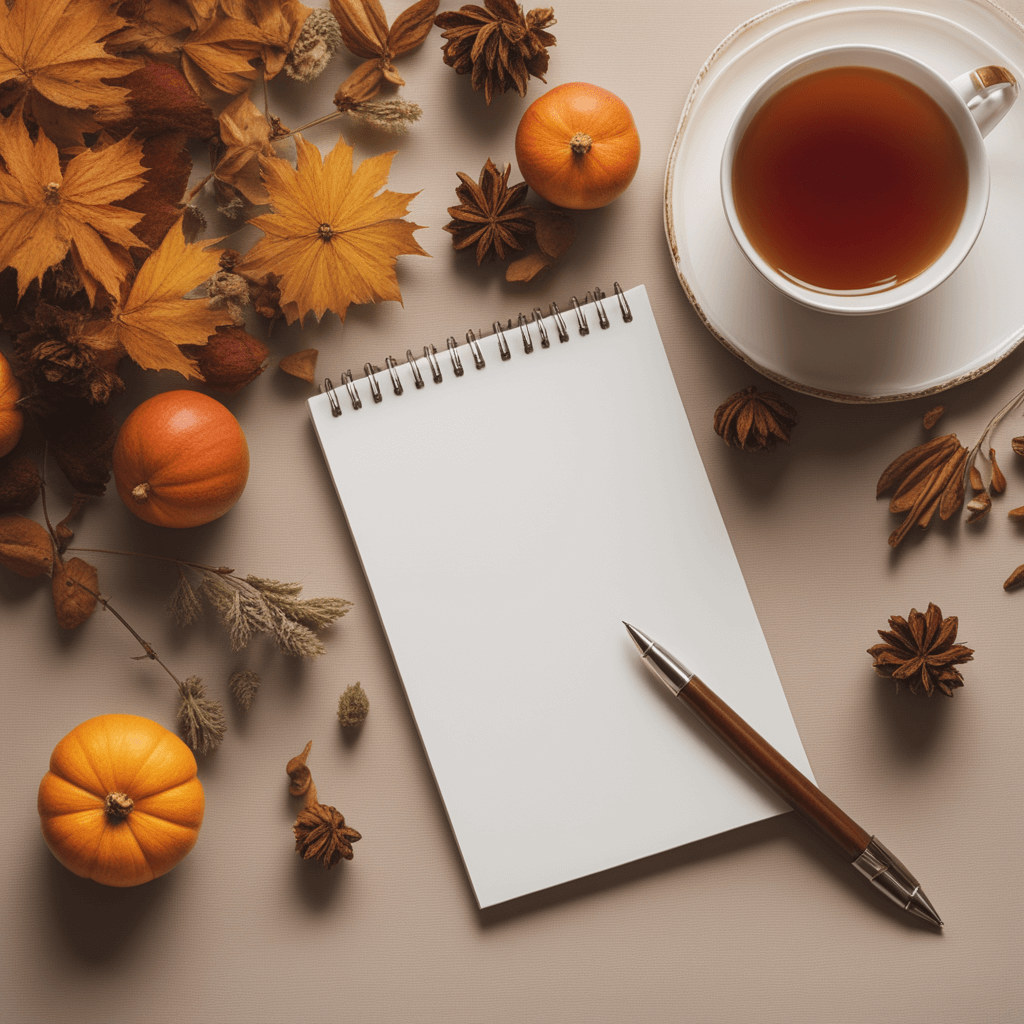
- Set a consistent bedtime, even during Thanksgiving festivities
- Dim lights 1-2 hours before bed
- Listen to gentle nature sounds or soft autumn-themed music
- Use autumn-themed aromatherapy in a diffuser or homemade room spray
- Practice 5-10 minutes of gentle meditation
- Add notes to your Thankful Jar reflecting on the day’s moments
- Avoid screens for the last hour before sleep
Mindfulness and stress management are ongoing practices, not perfect achievements. If your mind wanders during meditation or stress arises despite your best efforts, simply notice it and calmly bring your attention back to the present moment, like pausing to appreciate the vibrant colors and quiet beauty of an autumn day. Each moment of mindfulness, each grateful breath, and each conscious choice to prioritize your wellbeing builds your capacity for restorative sleep and genuine joy during this Thanksgiving season.
Remember at This Time of Gratitude…
As we’ve explored throughout this guide on how to sleep better during Thanksgiving, the season offers a unique opportunity to align our sleep routines with the natural rhythms of autumn. By thoughtfully incorporating seasonal elements, from gentle autumn melodies and harvest-inspired decor to nourishing vegetables and mindful gratitude practices, we create not just better nights of restorative sleep, but a deeper connection to the comforting energy that surrounds us this time of year.
The beauty of an autumn sleep ritual lies in its holistic approach. Rather than focusing on a single solution, we’ve woven together multiple sensory experiences that work in harmony to support your circadian rhythm and promote quality sleep: the soft melodies of thanksgiving songs that calm racing thoughts, the warming scents of seasonal essential oils that signal relaxation, the sleep-promoting qualities of traditional harvest vegetables that nourish both body and mind, and the calming power of gratitude practices that quiet sleep anxiety and reduce cortisol levels. Each element builds upon the others, creating a comprehensive approach to rest that celebrates the essence of this season of abundance and reflection.
As you implement these suggestions, remember that creating better sleep habits is itself a journey of transformation, one that requires patience, consistency, and self-compassion. Just as autumn unfolds gradually, with each leaf changing color in its own time, your path to better sleep may have its own unique rhythm. Embrace the process, celebrate small improvements, and trust that with each mindful choice, you’re creating not just better nights but more restful, grateful days filled with the warmth and contentment that Thanksgiving embodies.
Autumn Sleep and Thanksgiving Relaxation FAQ
Here are answers to the most common questions about how to sleep better for Thanksgiving festivities:
Why do I feel so sleepy after Thanksgiving dinner?
People feel sleepy after Thanksgiving dinner mainly because the large, rich meal causes blood sugar to spike and then drop, triggering drowsiness. Overeating requires extra blood flow for digestion and increases “rest and digest” hormones that relax the body. While turkey contains tryptophan, it isn’t unique in this regard and doesn’t cause significant sleepiness by itself. Carbohydrate-rich side dishes, alcohol, and relaxing after a big meal all contribute. For some, frequent or extreme food comas may signal underlying gut issues like imbalances or inflammation affecting digestion and energy. Altogether, the urge for a nap comes from food quantity, composition, hormones, digestion, and the restful holiday atmosphere.
How can I celebrate Thanksgiving without overeating?
Practice mindful eating by slowing down and savoring each bite. Notice the textures, flavors, and aromas of seasonal dishes like roasted sweet potatoes and cranberry relish. This approach not only enhances your enjoyment but also gives your body time to register fullness, preventing the uncomfortable bloating that can disrupt sleep later. Start with smaller portions, focus on the vegetables and lighter options first, and remember that you can always go back for seconds if you’re genuinely still hungry. After your meal, sip a cup of calming herbal tea like chamomile or a cinnamon-nutmeg blend to soothe digestion.
Are there specific foods I should eat (or avoid) to sleep better for Thanksgiving?
Focus on sleep-supporting harvest vegetables like sweet potatoes, pumpkin, butternut squash, Brussels sprouts, and broccoli. These are rich in magnesium, potassium, B vitamins, and fiber, all nutrients that promote relaxation and healthy sleep cycles. Choose protein sources such as turkey for its tryptophan, but balance your plate with complex carbohydrates and healthy fats. Avoid heavy, carbohydrate-loaded sides, excessive alcohol, and caffeine, as they can disrupt sleep quality. If you’re hosting, consider serving the meal earlier in the day to give everyone’s digestive system time to settle before bedtime.
What should I do if Thanksgiving stress is keeping me awake at night?
Stress and anxiety are the most common reasons people lose sleep during Thanksgiving. Combat this by establishing a consistent bedtime routine even during the festivities. Set aside 5-10 minutes for gentle meditation or the Vibrant Leaf Gratitude Breath exercise described in this guide. Dim your lights 1-2 hours before bed, avoid screens during the last hour, and use calming aromatherapy with autumn scents like cedarwood or vetiver. Most importantly, write down three things you’re grateful for before bed, this simple practice helps rewire your brain for positivity and quiets anxious thoughts.
Are naps helpful or harmful during Thanksgiving holiday sleep disruptions?
Napping during Thanksgiving can be beneficial or disruptive depending on timing and length. Short naps of 15-20 minutes early in the afternoon boost alertness and mood without interfering with nighttime sleep. They help counteract post-meal drowsiness and support digestion after heavy food. However, longer naps over 30 minutes or those taken late in the day can delay the body’s sleep drive, making it harder to fall asleep at night. To optimize holiday naps, keep them brief, avoid caffeine after early afternoon, rest in a quiet space, and set alarms to prevent oversleeping.
How does the change in daylight during autumn affect sleep?
As autumn arrives, daylight hours shorten significantly, which impacts the body’s internal clock, or circadian rhythm. This shift signals earlier melatonin release in the evening, making people feel sleepier sooner than in summer. While this natural adjustment can promote earlier bedtimes, it often causes disruption if bedtimes are irregular or inconsistent. Shorter days can also affect mood and energy due to decreased sunlight exposure, sometimes contributing to seasonal affective disorder (SAD). To adapt healthily, gradually adjust sleep and wake times by 15-30 minutes every few days. Additionally, increasing exposure to natural light during morning hours helps regulate melatonin and serotonin balance, improving overall sleep timing and quality.
What is the best bedroom temperature for sleeping well in autumn?
Optimal ambient temperature for sleep in autumn typically ranges between 18-20°C (65-68°F). Cooler temperatures promote the body’s natural drop in core temperature, necessary for initiating and maintaining sleep cycles. During autumn, fluctuating outdoor temperatures require adjustments such as layering blankets, wearing breathable fabrics, or slightly reducing thermostat settings. Opening windows during warmer daytime hours enhances ventilation and air quality, but ensure draft control to avoid chills during the night. Maintaining indoor humidity around 40-60% also helps prevent dryness that can interfere with comfort and breathing quality, thereby supporting uninterrupted sleep.




